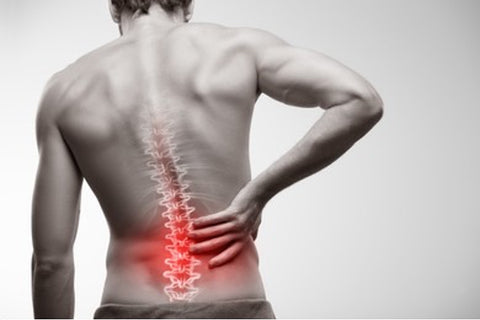Have you ever experienced a time when you take a deep breath and something just doesn't quite feel right? An aching pain that you have no idea where it came from?
When you're experiencing certain types of back pain, something as little as taking a deep breath can amplify the pain to a whole new level. As unnatural as it feels, this is your lower back sending a cry for help. In most cases the root of the problem is not too destructive, and can be fixed with a few simple solutions. Once you understand why my back hurts when I breathe and how I can fix it, you will open yourself up to a whole new pain free world.

Back Hurts When I Breathe - Serious Cases:
Several different factors can contribute to why my back hurts when I breathe. Before we dive into the more likely reasons of why my back hurts when I breathe, it's important to look at the possibility of serious sources of back pain that require medical attention. These include:

- Strained muscle
- Scoliosis
- Lung problems
- Broken rib
- Fractured Vertebrae
- Herniated disk
- Pinched nerve
It's worth considering that your back pain may be related to a more serious issue, but it's important to note that muscle pain is a much more common and general diagnosis. While there are many painful complications associated with serious back problems, experiencing back pain while breathing could simply be a symptom of weak or injured surrounding spinal muscles.
Back Hurts When I Breathe - Psoas:
A more common reason to why my back hurts when I breathe, cough, or sneeze is due to certain muscles being left weak and tight. These muscles include the psoas and the quadratus lumborum.

First up, the psoas muscle, which extends from the lumbar vertebrae to the top of the femur, is a particularly important hip flexor. Psoas helps connect the lower body to the upper body by passing directly through the stomach. In addition to low back pain, psoas muscle pain can cause a wide range of other symptoms and lower one's quality of life.
The psoas muscle is often linked to back pain when breathing due to the muscles willingness to become tight. A tight psoas muscle is typically related to bad posture and sitting for extended periods of time. When you're hunched over all day your psoas tightens up which results in tension and pain.
Something as small as breathing can cause pain to the psoas which has a direct effect on the lower back.
Psoas muscle exercises, along with massaging and stretching are great ways to find relief.
Back Hurts When I Breathe - Quadratus Lumborum:

The next muscle on the list is the quadratus lumborum (QL). The quadratus lumborum muscle plays a key role in examining why my back hurts when I breathe. The quadratus lumborum connects from the top of the pelvis to the bottom of the rib cage. Because of the QL's function and eagerness to tighten, this muscle can be the source of a lot of lower back issues.
Besides protecting the spine and controlling movement at the waist, both sides of the Quadratus Lumborum participate together in forced exhalation, such as in coughing and sneezing [1.]. If this is where your pain resides when breathing (especially deep breathing), relieving tightness and tension of the muscle will help potentially get rid of future pain.
Back Hurts When I Breathe - Pain Relief:
Fixing the root of the problem of why my back hurts when I breathe is to free your quadratus lumborum and psoas muscles of built of tension and tightness.

A great way to rid your muscles of tension and tightness is through a combination of deep tissue muscle massage combined with isolated stretching. When starting with deep tissue massage, the stretching portion will be much easier and beneficial to the muscle. A deep, soothing deep tissue massage on both the quadratus lumborum and psoas will release the muscles of their constant tension and allow them to exist as a normal, non-pain-inducing muscles.
For both the Quadratus Lumborum and the Psoas muscles, a great tool for deep tissue massage is the QL Claw. The QL Claw is strategically designed for releasing muscle knots in 5 total muscles (the quadratus lumborum and psoas being two of them). Get your QL Claw today and rid your muscles of constant pain.
Described by a licensed massage therapist saying - "it's difficult to get that sweet spot with the right leverage, but with the QL Claw those problems are no longer".
[1] Donnelly, Joseph M. Travell, Simons & Simons Myofascial Pain and Dysfunction: the Trigger Point Manual. 3rd ed., Wolters Kluwer Health, 2019.
[2] Davies, Clair, and Amber Davies. The Trigger Point Therapy Workbook: Your Self-Treatment Guide for Pain Relief. 3rd ed., New Harbinger Publications, Inc., 2013.


